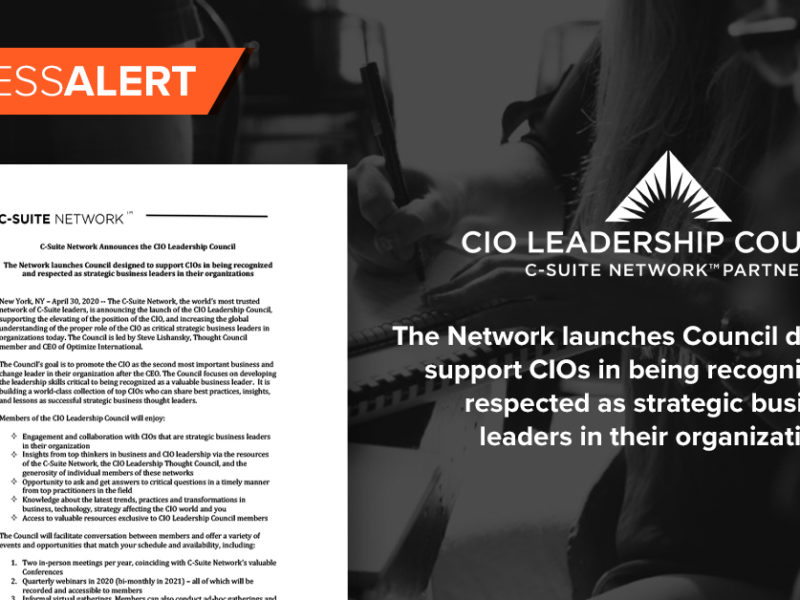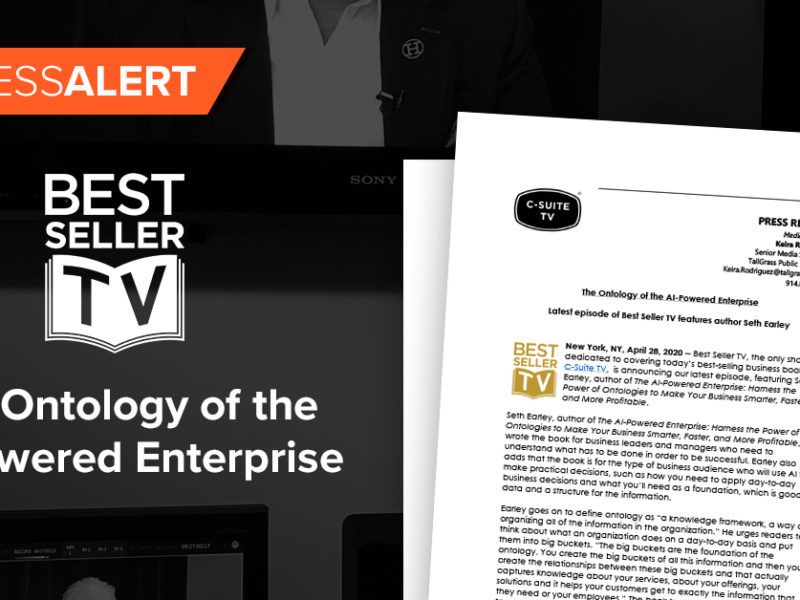
It’s Time to Evolve | 6 Tips to Prolong the Lifespan of the Endangered C-Suite Species: The CIO
It’s Time to Evolve | 6 Tips to Prolong the Lifespan of the Endangered C-Suite Species: The CIO https://csuiteold.c-suitenetwork.com/wp-content/uploads/2015/03/14271338940_50588ff06e_z.jpg 640 424 C-Suite Network https://csuiteold.c-suitenetwork.com/wp-content/uploads/2015/03/14271338940_50588ff06e_z.jpgby Bob Dvorak

In our previous piece, we explained that CIOs are facing incredible pressure to perform in today’s digital age. A recent study by McKinsey & Co. only bolstered negative perceptions of IT leadership. The report said business executives don’t see the CIO as a strategic business partner.
In this article, the second in a two-part series, we’ll discuss the recommendations we have for CIOs to help them align and unify their organization’s IT strategy with their company’s business strategy.
Here are six tips for CIOs to better align their IT strategy with business strategy to avoid, what one company called “a Darwinian moment:”
1. Understand That There is a New IT Operating Model
Gone are the times when the CIO’s role was that of a utility company. Simply keeping the lights on is just not enough anymore. We live in a digital age — board members and CEOs expect technology to be at the heart of their digital business transformation.
2. Simplify. Simplify. Simplify.
In its 2014 Application Landscape Report, consulting firm Capgemini suggests that 48 percent of respondents having more applications than they need, a jump from 34 percent reported in Capgemini’s 2011 survey.
In order to reduce the sprawl strategically, companies can benefit from conducting a “buy/hold/sell” analysis, a model CFOs and CEOs are very familiar with, and apply it to the company’s IT application portfolio.
For example:
- Which of your applications are redundant upon Day One (sell)?
- Which ones do you need to maintain (hold)?
- Which applications do you need to make an investment in to innovate or differentiate yourself from your competitors (buy)?
Answer these, and you might just discover untapped value in your IT portfolio — just as personal genetics company 23andMe did when it sold its data to Genentech for $60 million.
This shouldn’t surprise anyone. Gartner’s Peter Sondergaard suggested in 2011, “Information is the oil of the 21st century, and analytics is the combustion engine,” CFOs have a fundamental need to understand those data and digital capabilities.
3. Consider the ROI of Every IT Investment
Think about these questions:
- If you asked your CEO what the single most important metric he or she uses to evaluate their effectiveness, he or she would probably say “return on shareholder value.”
- If you asked your CFO, what would he or she say? Likely, “return on invested capital.”
- But what would your CIO say? (*crickets*)
You can best measure IT’s return on investment by dividing the organization’s business capabilities by its costs. Much like how miles-per-gallon measures a car’s efficiency, dividing business capabilities by department costs (such as software licenses, application maintenance, hardware leases and other costs) gives you your IT’s MPG.
While not all capabilities are created equal — innovative and differentiating capabilities carry more weight than basic business capabilities, such as accounts receivable or accounts payable — understanding this metric will provide better visibility on IT investments, what capabilities those investments provide and what business results will those investments achieve.
4. Manage the Specter of Shadow IT
In Morgan Freeman’s “Through the Wormhole,” he speaks about the specter of a “shadow universe.”
“We live in a universe filled with light…At least that’s what it looks like…But scientists are now certain there is far more matter in this universe than we can see. We know this dark matter must exist, because we can detect the pull of its gravity,” Freeman says.
According to scientists, dark matter is pulling stars off their expected courses, and the ramifications for unsuspecting galaxies and planets can be great.
Similarly, shadow IT cannot only pull the IT organization off-course, but the entire enterprise. Gartner reported in its 2015 CIO Agenda that Shadow IT consumes as much as 20 percent of a company’s IT resources and, for the first time, respondents to the SIM IT Trends Study included Shadow IT among their list of management concerns.
The creep of shadow IT can cause problems for other corporate functions, as well.
For example, according to a 2013 Forrester report, 70 percent of employees using Dropbox use it solely for work. With that, you can’t help but wonder: What policies or controls do you have in place to manage this practice?
Or, what if I told you that 52 percent of IT executives said they don’t have processes in place to manage outside sources, such as Dropbox, according to disaster recovery solutions provider Vision Solutions, in its 2015 State of Resilience Report?
What happens if Dropbox experiences a system outage and your team can’t access important documents?
5. Circle the Wagons on Security
Former FBI Director Robert Mueller said in 2012, “There are only two types of companies: Those that have been hacked and those that will be.”
What kind of security risks does shadow IT create for your organization? What happens when an employee uses the same password for both personal and enterprise accounts and hackers target that person’s personal account?
Their low-security Google Drive password just created a big headache for your organization.
In 2013, the Identity Theft Resource Center reported more than 600 data breaches. In 2014, it reported a record 783 data breaches, resulting in the release of more than 85 million records.
6. Build (and Leverage) Strategic Relationships Within the Organization
According to McKinsey, CIOs and IT leaders may need to improve their understanding of the business before they can contribute to overall business strategy.
By learning different roles, fostering partnerships with different executives and business unit heads, and exchanging knowledge across the C-suite, CIOs and IT leaders can cultivate the necessary business and technology know-how, resulting in a more involved CIO.
Here’s the payoff: Companies that have CIOs who are more involved in business strategy report better performance from IT, according to McKinsey.
And with some IT budgets the size of Fortune 500 organizations, it’s time to ensure that business and IT strategy are aligned around the things that matter most capital, talent and IT performance to ensure that the organization is getting the most from its IT investment.
 Bob Dvorak is Founder and President of KillerIT. He is responsible for KillerIT’s strategic direction and execution. Under his leadership, KillerIT continues to grow and succeed. During Bob’s 25 years at Forsythe, he has held a number of national management positions and earned numerous distinctions. Most recently, he was senior vice president, general manager, responsible for serving clients in the company’s Central Area. Prior, he was responsible for the establishment and development of the company’s Western Area, which experienced double-digit growth in product sales and professional consulting services under his leadership.
Bob Dvorak is Founder and President of KillerIT. He is responsible for KillerIT’s strategic direction and execution. Under his leadership, KillerIT continues to grow and succeed. During Bob’s 25 years at Forsythe, he has held a number of national management positions and earned numerous distinctions. Most recently, he was senior vice president, general manager, responsible for serving clients in the company’s Central Area. Prior, he was responsible for the establishment and development of the company’s Western Area, which experienced double-digit growth in product sales and professional consulting services under his leadership.




